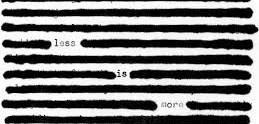SDGT Removal Highlights EO 13224 Designation Responsibilities
Generally speaking, when an email from the U.S. Department of the Treasury referencing a “Counter Terrorism Designation Removal” pops up in my inbox, the first thing that goes through my head is that this is going to be an obituary. Though the consecutive removals of Yassin Al Qadi, Son Hadi bin Muhadjir, and now Sajid Badat have proven exceptions to the rule, death by drone strike remains the best way to have your Specially Designated Global Terrorist (“SDGT”) designation removed. But Badat’s delisting provides an important lesson in how SDGT designations are implemented and removed.
While Treasury, which is responsible for administering the list, announces any changes to the SDN list, it shares responsibility for designations with the State Department under several different programs. This includes SDGT designations pursuant to Executive Order 13224. In the case of Sajid Badat, who in 2005 was sentenced to 13 years in a British prison for plotting to blow up a transatlantic flight, the State Department issued the original designation and the recent removal.
Under § 1(b) of EO 13224, the Secretary of State is responsible for designating individuals and entities who
have committed, or to pose a significant risk of committing, acts of terrorism that threaten the security of U.S. nationals or the national security, foreign policy, or economy of the United States
These designations, along with those in the original 13224 Annex, can be thought of as primary SDGT designations, from which other SDGT identifications can stem from. § 1(b) designations are for individuals and entities that actually engage in, or conspire to engage in, physical acts of terrorism.
Under § 1(c) the Secretary of the Treasury is responsible for designating persons that are
owned or controlled by, or to act for or on behalf of those persons listed in the Annex to this order or those persons determined to be subject to subsection 1(b), 1(c), or 1(d)(i) of this order
The Secretary of the Treasury may also designate under § 1(d) those found
(i) to assist in, sponsor, or provide financial, material, or technological support for, or financial or other services to or in support of, such acts of terrorism or those persons listed in the Annex to this order or determined to be subject to this order; or (ii) to be otherwise associated with those persons listed in the Annex to this order or those persons determined to be subject to subsection 1(b), 1(c), or 1(d)(i) of this order.
Designations made pursuant to § 1(b) and § 1(c) result in the mandatory blocking of the designee’s assets. § 1(d) designations may result in a blocking action, but the Secretary of the Treasury does have the authority to take action other than asset blocking.
Badat is the first § 1(b) designation that I can recall, at least in the recent past. His delisting likely has to do with his testimony in the prosecution of Abu Hamza al Misri and participation in a British de-radicalization program.



